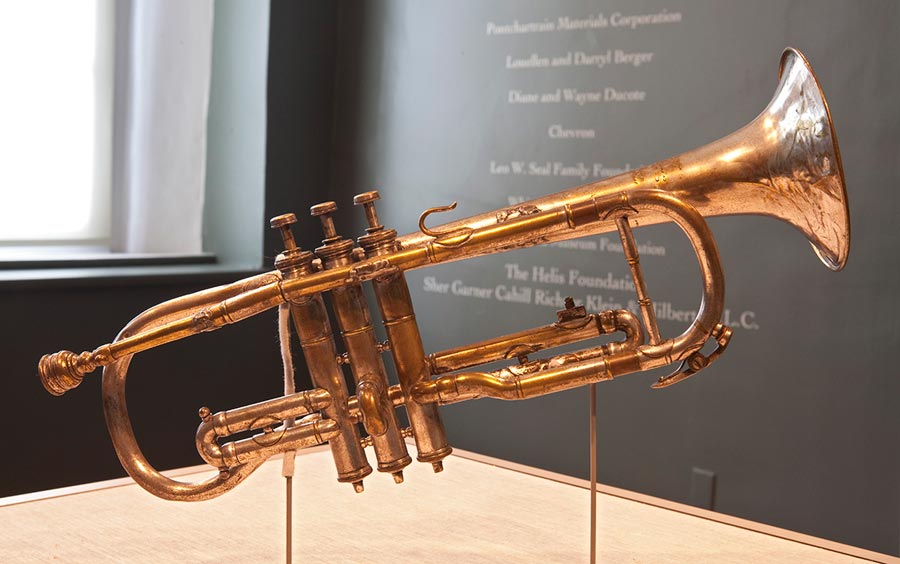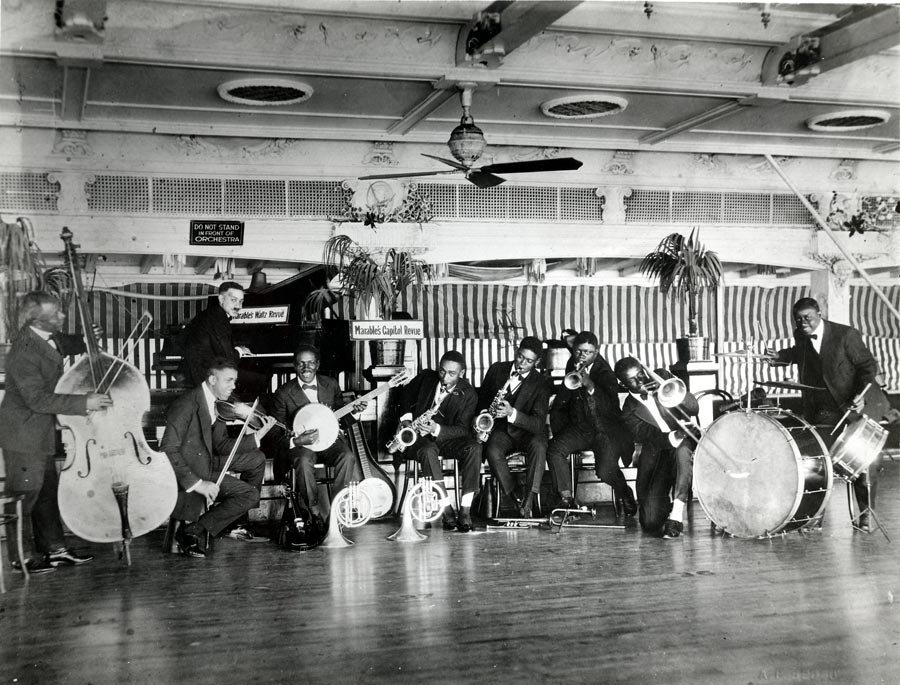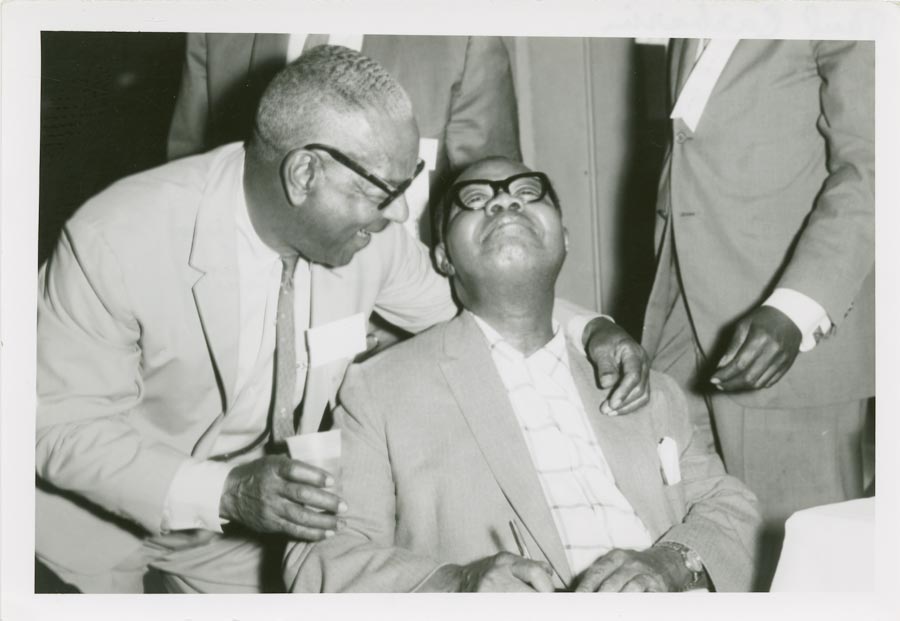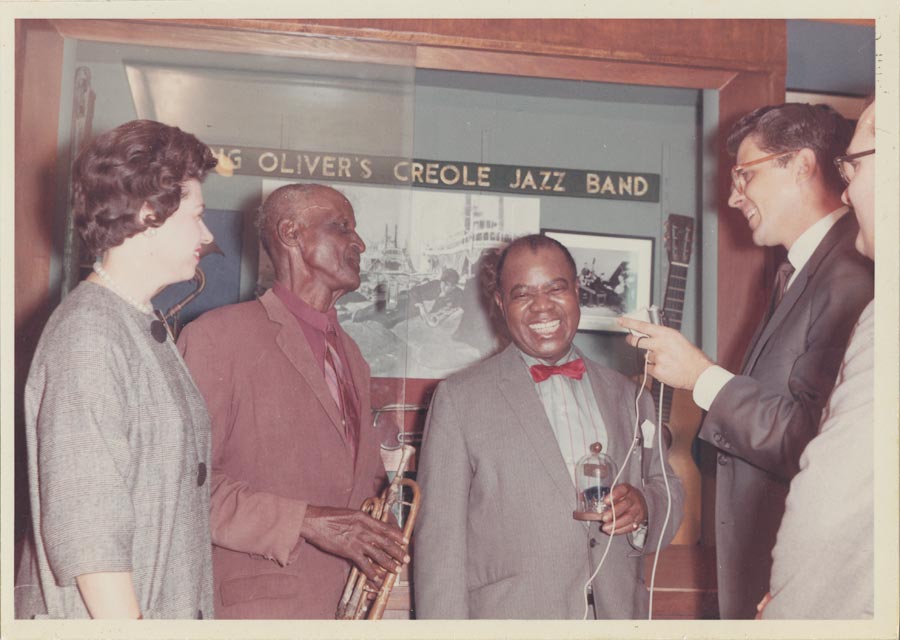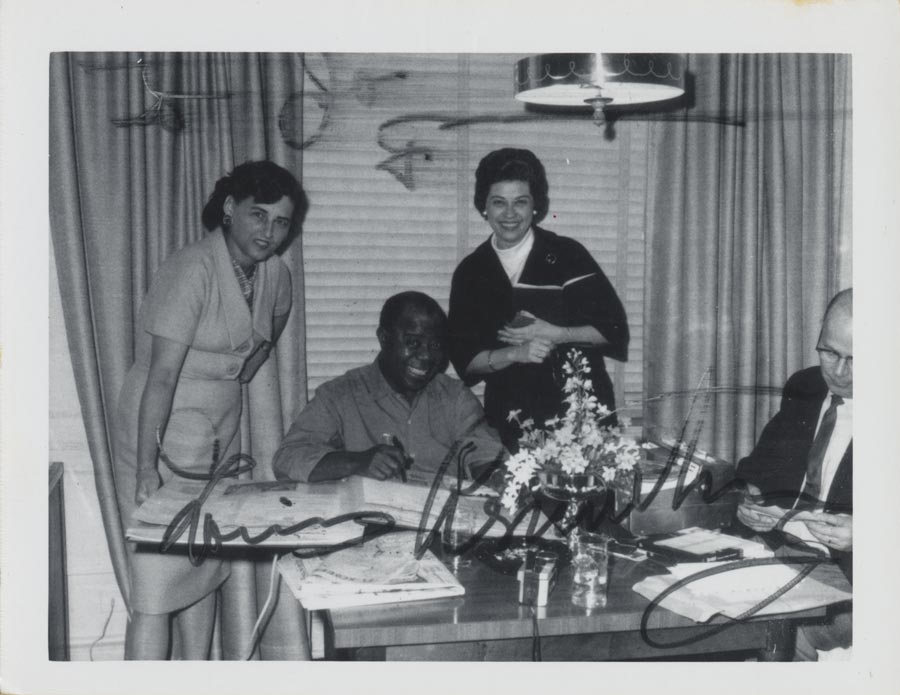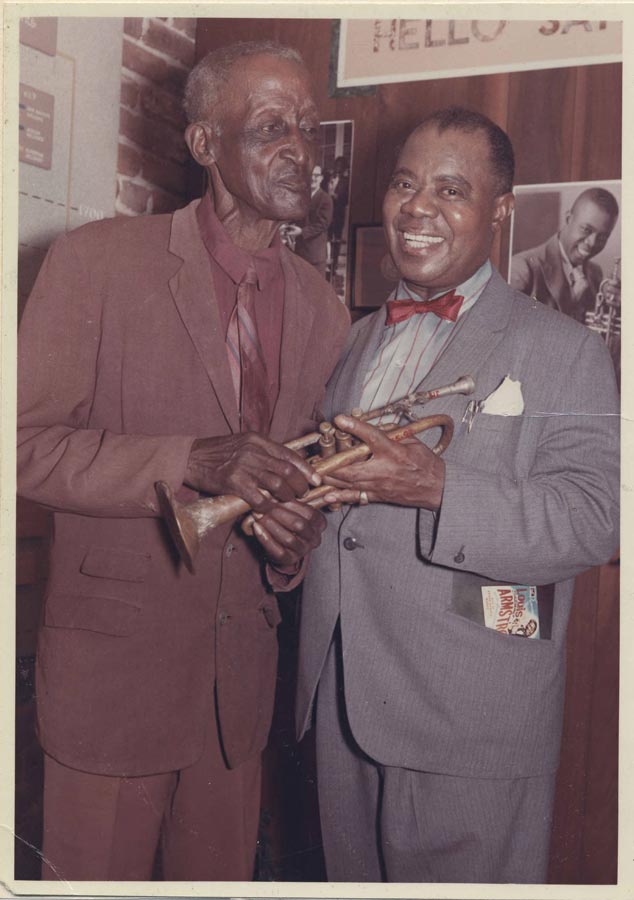May 30, 2024
It’s the dog days of summer, and we are all looking for an escape from the heat. A favorite of locals and tourists alike is the New Orleans Jazz Museum, located in the historic Old U.S Mint building at 400 Esplanade Ave. by the French Market. At the Jazz Museum, you can learn about jazz in the very city where it was born and enjoy dynamic interactive exhibits. The museum offers engaging listening stations, instruments, photographs, and artwork … and it’s free!
The new exhibit “Satchmo: Louis Armstrong’s Life in New Orleans” opens on Aug. 1. It gives a glimpse into Armstrong’s evolving relationship with the city after his departure. The exhibit presents the moving story of Armstrong’s early influences, including his mother Mayann. Armstrong was arrested and sentenced to the Colored Waif’s Home after a friend dared him to shoot his stepfather’s pistol in the air on New Year’s Eve of 1912. Armstrong was only 12, but the music instructor of the home, Peter Davis, recognized his musical talent. He not only trained the self-taught Armstrong in music and made him leader of the home’s brass band, but he also instilled discipline. The exhibit also details how cornet legend Joe “King” Oliver became Armstrong’s mentor and biggest influence.
Greg Lambousy, Director of the New Orleans Jazz Museum said, "Louis Armstrong is known world-wide and is the most recognizable New Orleanian. Unlike many other musicians and entertainers, Armstrong's career continued to grow throughout his life from the beginning of the 20th century until his death in 1971. Armstrong's autobiography My Life in New Orleans is an American classic. It should be essential reading; his spirit comes through on every page. We hope to do something similar with this exhibit."
Known for his distinctly unique gravelly voice, his incomparable trumpet skills and his pioneering of jazz music, Louis Armstrong became one of the best jazz musicians and greatest entertainment personalities the world has ever known. Though he was a universally known figure and celebrity, Armstrong was a New Orleanian who took local music from its raw origins and introduced it to the world as a refined art form.
Armstrong was born in New Orleans on Aug. 4, 1901, moved to Chicago around 1925, and eventually made New York his home. However, he kept New Orleans close to his heart. In letters, interviews, private recordings and unpublished manuscripts, he reflected on his life in New Orleans. A prolific prose writer, Armstrong considered issues well beyond music in his narratives, including race relations in New Orleans. The exhibit includes dozens of pages from manuscripts he wrote, including a reproduction of a letter on being named “King of the Zulus” in 1949. A photo of him as Zulu made the cover of TIME magazine in 1949. This realization of his boyhood dream hurt his standing among African-Americans at the time. He lamented the segregation laws prohibiting his integrated All Stars band from performing in the city.
Highlights of the exhibit include his first rickety shepherd’s crook cornet with a notched mouthpiece from the Colored Waif’s Home where he played for the raising and lowering of the flag and later led their brass band. After serving his sentence, Louis began playing his horn in the noisy, smoke-filled musical clubs of Black Storyville. Honing his skills by playing in early brass bands with Joe Oliver, Bunk Johnson, Kid Ory and others, he replaced Oliver in Ory’s band in 1919 when Oliver moved to Chicago.
The exhibit also features recordings of Armstrong’s voice from his vast collection of private audio tapes, as well as video excerpts from television interviews. Ranging from Armstrong’s impoverished youth to his triumphant 1965 homecoming, the exhibit paints a portrait of one of the greatest artists America has produced, one who rose from the humblest origins to grace the world’s biggest stages and rightfully take his place among the world’s most famous and creative stars.
Armstrong’s first paid professional gig was at Henry Ponce’s Honky Tonk in New Orleans in 1915. The saloon is long gone, but the memories linger through Armstrong’s writings. His memoirs begin with handwritten papers, reminiscing about his boyhood and the Jewish Karnofsky family that took him into their home and taught him about “singing from the heart.”
Armstrong left New Orleans in 1925 for Chicago to join fellow New Orleanian King Oliver’s band. He returned in 1931 and started a baseball team called the Black Pelicans, a counter to the all-white New Orleans Pelicans. Complicated race relations in his hometown were intolerable, so he left for good in 1956.
Armstrong’s humble beginnings in New Orleans soon blossomed into worldwide stardom as the most renowned founding father of jazz, a unique American art form. As the years passed, Satchmo’s star appeal grew. He had recording contracts with major labels and made movies with major Hollywood studios. In 1964, at age 62, he was the oldest musician to ever have a number-one song on the Billboard charts. “Hello Dolly” knocked The Beatles out of the top position they held for fourteen weeks! He played for presidents, European royalty, and for high-ranking officials on his beloved continent of Africa. “Pops,” as he was often called, toured internationally as a special envoy for the U.S. State Department. He represented his country and New Orleans with dignity, charm and class.
Armstrong’s legacy as an artist and cultural icon is universal, unmatched, and endures today. We continue to honor Satchmo’s legacy in many ways. FrenchQuarter Fest, Inc produces Satchmo Summerfest at the New Orleans Jazz Museum on his birthday weekend, Aug. 3 and 4, with live traditional jazz bands on two stages. Satchmo seminars are also held inside the Jazz Museum, featuring Armstrong biographers and historians as well as discussions with local musicians who have been inspired by him. There will be delicious food served by local restaurants. It’s the highlight of our summer and it’s free! What a wonderful world!
The new exhibit “Satchmo: Louis Armstrong’s Life in New Orleans” opens on Aug. 1. It gives a glimpse into Armstrong’s evolving relationship with the city after his departure. The exhibit presents the moving story of Armstrong’s early influences, including his mother Mayann. Armstrong was arrested and sentenced to the Colored Waif’s Home after a friend dared him to shoot his stepfather’s pistol in the air on New Year’s Eve of 1912. Armstrong was only 12, but the music instructor of the home, Peter Davis, recognized his musical talent. He not only trained the self-taught Armstrong in music and made him leader of the home’s brass band, but he also instilled discipline. The exhibit also details how cornet legend Joe “King” Oliver became Armstrong’s mentor and biggest influence.
Greg Lambousy, Director of the New Orleans Jazz Museum said, "Louis Armstrong is known world-wide and is the most recognizable New Orleanian. Unlike many other musicians and entertainers, Armstrong's career continued to grow throughout his life from the beginning of the 20th century until his death in 1971. Armstrong's autobiography My Life in New Orleans is an American classic. It should be essential reading; his spirit comes through on every page. We hope to do something similar with this exhibit."
Known for his distinctly unique gravelly voice, his incomparable trumpet skills and his pioneering of jazz music, Louis Armstrong became one of the best jazz musicians and greatest entertainment personalities the world has ever known. Though he was a universally known figure and celebrity, Armstrong was a New Orleanian who took local music from its raw origins and introduced it to the world as a refined art form.
Armstrong was born in New Orleans on Aug. 4, 1901, moved to Chicago around 1925, and eventually made New York his home. However, he kept New Orleans close to his heart. In letters, interviews, private recordings and unpublished manuscripts, he reflected on his life in New Orleans. A prolific prose writer, Armstrong considered issues well beyond music in his narratives, including race relations in New Orleans. The exhibit includes dozens of pages from manuscripts he wrote, including a reproduction of a letter on being named “King of the Zulus” in 1949. A photo of him as Zulu made the cover of TIME magazine in 1949. This realization of his boyhood dream hurt his standing among African-Americans at the time. He lamented the segregation laws prohibiting his integrated All Stars band from performing in the city.
Highlights of the exhibit include his first rickety shepherd’s crook cornet with a notched mouthpiece from the Colored Waif’s Home where he played for the raising and lowering of the flag and later led their brass band. After serving his sentence, Louis began playing his horn in the noisy, smoke-filled musical clubs of Black Storyville. Honing his skills by playing in early brass bands with Joe Oliver, Bunk Johnson, Kid Ory and others, he replaced Oliver in Ory’s band in 1919 when Oliver moved to Chicago.
The exhibit also features recordings of Armstrong’s voice from his vast collection of private audio tapes, as well as video excerpts from television interviews. Ranging from Armstrong’s impoverished youth to his triumphant 1965 homecoming, the exhibit paints a portrait of one of the greatest artists America has produced, one who rose from the humblest origins to grace the world’s biggest stages and rightfully take his place among the world’s most famous and creative stars.
Armstrong’s first paid professional gig was at Henry Ponce’s Honky Tonk in New Orleans in 1915. The saloon is long gone, but the memories linger through Armstrong’s writings. His memoirs begin with handwritten papers, reminiscing about his boyhood and the Jewish Karnofsky family that took him into their home and taught him about “singing from the heart.”
Armstrong left New Orleans in 1925 for Chicago to join fellow New Orleanian King Oliver’s band. He returned in 1931 and started a baseball team called the Black Pelicans, a counter to the all-white New Orleans Pelicans. Complicated race relations in his hometown were intolerable, so he left for good in 1956.
Armstrong’s humble beginnings in New Orleans soon blossomed into worldwide stardom as the most renowned founding father of jazz, a unique American art form. As the years passed, Satchmo’s star appeal grew. He had recording contracts with major labels and made movies with major Hollywood studios. In 1964, at age 62, he was the oldest musician to ever have a number-one song on the Billboard charts. “Hello Dolly” knocked The Beatles out of the top position they held for fourteen weeks! He played for presidents, European royalty, and for high-ranking officials on his beloved continent of Africa. “Pops,” as he was often called, toured internationally as a special envoy for the U.S. State Department. He represented his country and New Orleans with dignity, charm and class.
Armstrong’s legacy as an artist and cultural icon is universal, unmatched, and endures today. We continue to honor Satchmo’s legacy in many ways. FrenchQuarter Fest, Inc produces Satchmo Summerfest at the New Orleans Jazz Museum on his birthday weekend, Aug. 3 and 4, with live traditional jazz bands on two stages. Satchmo seminars are also held inside the Jazz Museum, featuring Armstrong biographers and historians as well as discussions with local musicians who have been inspired by him. There will be delicious food served by local restaurants. It’s the highlight of our summer and it’s free! What a wonderful world!

